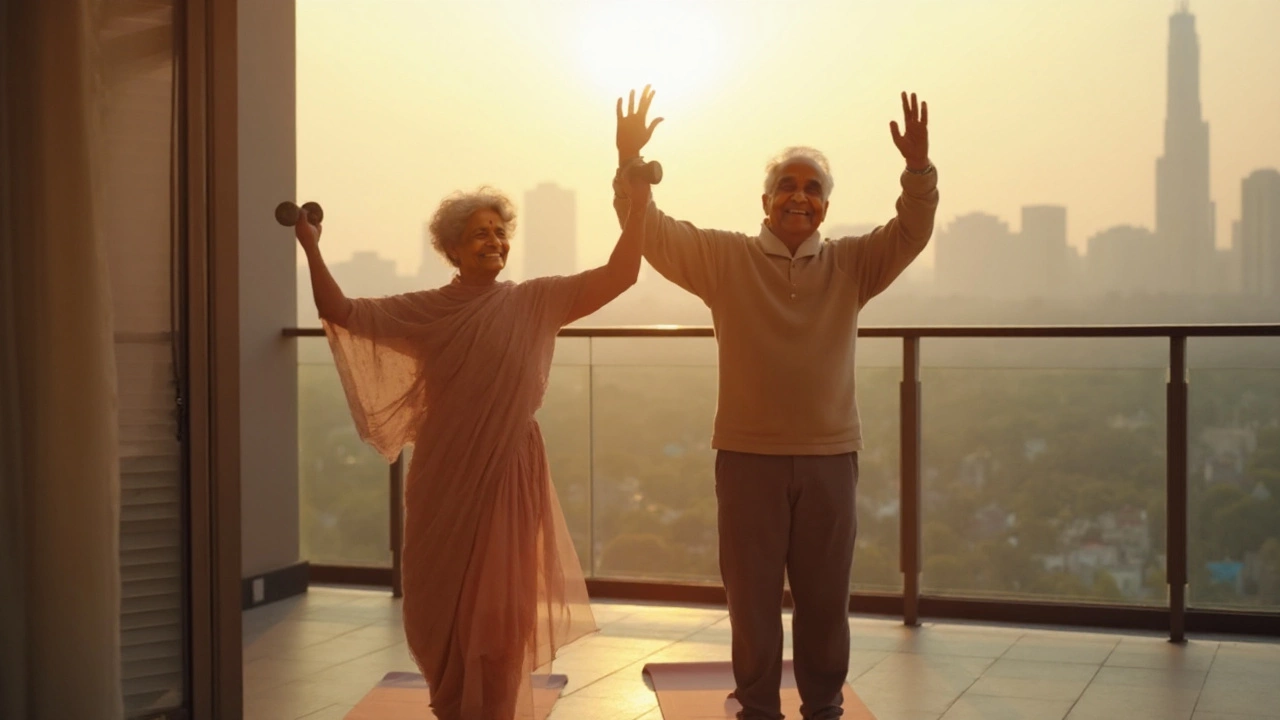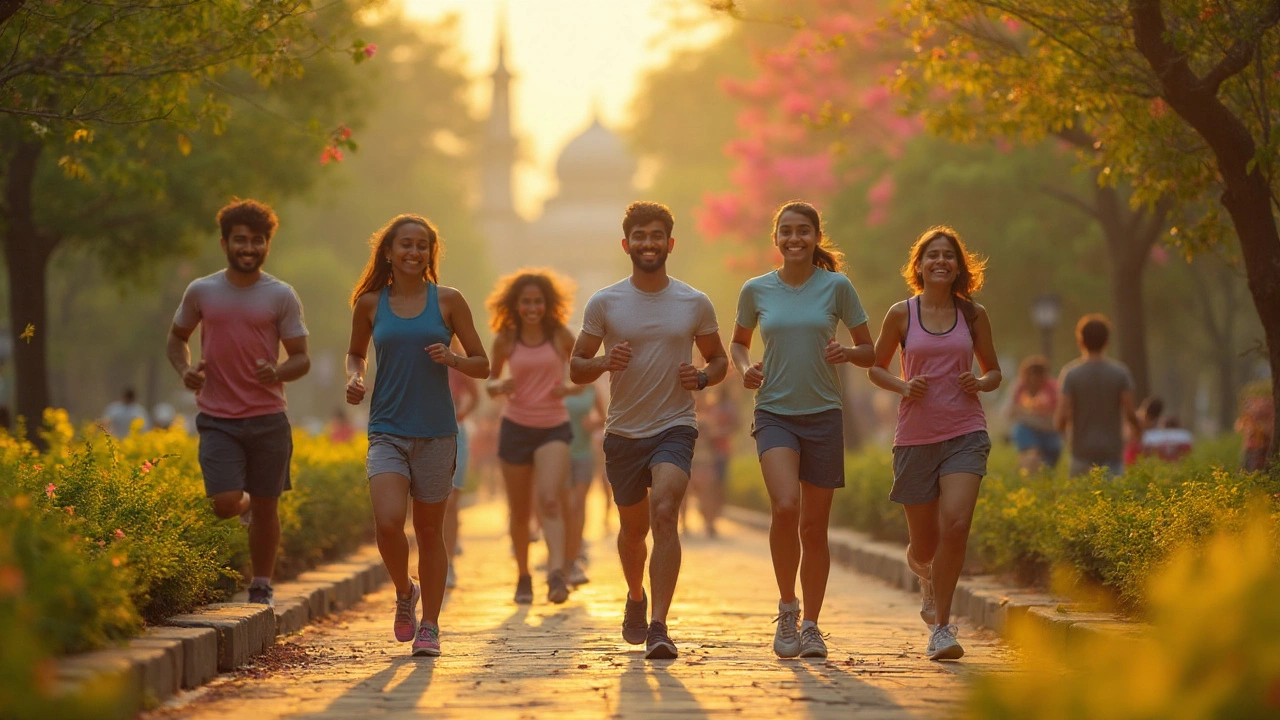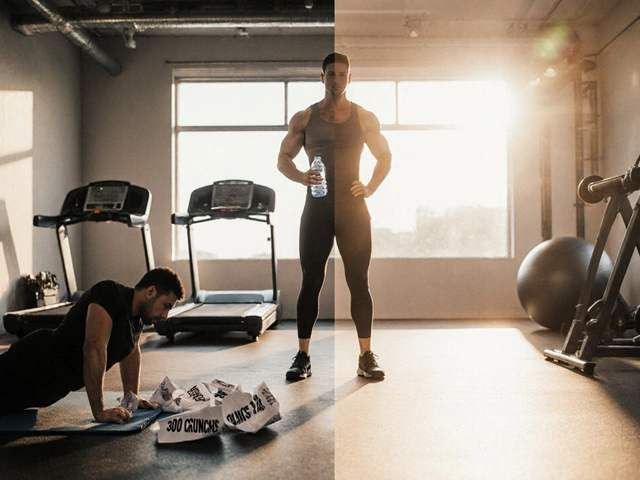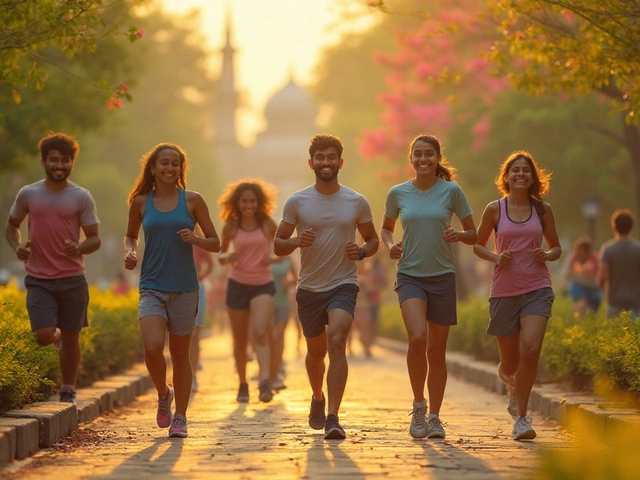What if I told you that shrinking telomeres, sluggish mitochondria, and creaky joints aren’t inevitable? Scientists have spent decades searching for the holy grail of anti-aging, and what they keep circling back to isn't a glossy serum or pricey pill. It's movement. But not just any movement—some exercises slam the brakes on aging at the cellular level much more powerfully than others. So, if you’re picturing endless crunches or running until your knees give out, I’ve got some news. The real anti-aging magic looks a bit different (and might surprise you).
What Happens to Your Body as You Age?
Aging gets a bad rap, mostly because it changes nearly every part of us. Collagen production slows, skin sags, and muscles quietly shrink. Under the hood, our mitochondria—those powerhouse little energy factories in every cell—start sputtering. Muscle mass drops by around 3-8% each decade after the age of 30. That slow loss ramps up after 60, and suddenly climbing stairs feels like a workout. Bones thin out, too, and your telomeres—the caps on the ends of your chromosomes that keep DNA tidy—get shorter and shorter every year. Once they shrink too much, the cell can't divide cleanly, so it ages or dies off. Even the brain gets less flexible, making focus and memory a steeper climb.
Here’s the kicker: sedentarism (yes, sitting on your bum for hours) literally accelerates these changes. A 2017 study by the University of California, San Diego, found that women who sat for over 10 hours a day actually had ‘biological ages’ eight years older than active women their actual age. That’s not about wrinkles—it’s how fast your organs, immunity, and even your DNA are aging. Exercise doesn’t just stop some of those changes. The right kind can actually reverse cellular aging, build new mitochondria, and lengthen telomeres again. Not magic—it’s biology in motion.
But before you start briskly walking everywhere or going wild with heavy weights, a few things matter more than volume. Intensity, type, and recovery all play massive roles in what your body gets out of each workout. Knowing what actually works to keep cells, joints, and mind young is the real game changer.
The Science Behind Anti-Aging Exercise
If you asked a group of scientists for the most potent anti-aging workout in one word, almost all would say: aerobic. The evidence stacks higher each year. Large studies in Europe and the US pin aerobic workouts—think running, brisk walking, swimming, cycling—as clear winners for cellular health. These workouts don’t just get you sweaty; they prime your cardio-respiratory system, which translates to more oxygen, better heart health, and, surprisingly, longer telomeres. Telomere length is what researchers use as a biomarker for aging: longer telomeres equal a younger biological age.
One 2018 study published in the European Heart Journal split middle-aged adults into four exercise groups: aerobic endurance, interval training (HIIT), resistance training, and no exercise. After six months, the results were striking—only the aerobic and interval groups grew longer telomeres. The resistance group saw no change. So, stacking hours of gym-time on the weights might build muscle, but it won’t stall internal aging like cardio does.
HIIT (High-Intensity Interval Training) deserves a special mention. These are intense bursts (like 30 seconds of flat-out cycling or sprinting) followed by slow recovery, repeated multiple times. In a famous Mayo Clinic study, older adults doing HIIT saw a 69% increase in their cells’ mitochondrial capacity—basically supercharging the cell’s battery and stalling age-related energy decline.
But it doesn’t mean weights are useless (wouldn’t that be irritating?). Strength training protects against sarcopenia, which is the fancy term for the age-linked muscle loss. Maintaining muscle helps keep metabolism humming, stabilizes joints, and cuts fall risk later in life. But when talking pure anti-aging at the cell level, cardio—especially when done vigorously—comes out on top.
| Exercise Type | Main Benefit | Anti-Aging Effect |
|---|---|---|
| Aerobic (Cardio) | Heart & lung health, endurance | Lengthens telomeres, boosts mitochondria |
| HIIT | Maximizes heart rate, rapid intervals | Supercharges cell energy, reverses aging markers |
| Resistance Training | Builds muscle, strengthens bones | Preserves strength & stability as you age |
| Yoga | Flexibility, stress reduction | Reduces inflammation, improves joint health |
Of course, anti-aging isn’t just about living longer; it’s about feeling sharp, strong, and mobile at 70, 80, or 90. When Harvard researchers looked at lifelong active adults in their 70s, they found muscle loss was about half that of inactive people. Aerobic exercise triggered more stem cell activity in muscles and kept blood vessels elastic—a marker of “vascular youth.” These are not just numbers. You actually see it on the faces of older athletes: better posture, higher energy, and that irrepressible glow.

HIIT vs. Steady-State Cardio: The Big Debate
The last few years have brought endless fitness trends, but the HIIT-vs-cardio debate just refuses to disappear. So which is better for anti-aging? Steady-state cardio (like running or cycling at an even pace) has always been the go-to for long-term health, with research showing regular sessions as short as 20 minutes several times a week cut risk of heart attacks and premature death by about 30%. Cardio builds aerobic capacity—the stuff that helps you run up stairs without panting. Here’s the kicker: it also keeps telomeres hefty, slashes inflammation, and reduces risk factors for dementia. Not flashy, but incredibly effective.
HIIT throws down something a bit different. The intervals, while short, pump out a flood of natural growth hormones and nerve factors that keep not just the heart, but the brain sharp. In a randomized controlled trial from 2022, people aged 55+ who switched to HIIT for just 12 weeks showed a measurable boost in memory and even skin structure—thicker, healthier, and visibly more resilient. Plus, those workouts were often less than 25 minutes. So, if you’re busy or get bored easily, HIIT might be your best friend.
One overlooked aspect? Time spent recovering matters as much as exercise itself. HIIT ramps up 'autophagy,' which is basically your cells taking out the cellular trash—a powerful anti-aging move. But it’s also easy to overdo, especially as you age. Cardio, by contrast, is sustainable for decades if you manage intensity smartly.
Mixing the two yields the best of both worlds. A good week could look like two HIIT sessions and two moderate cardio sessions, plus a dash of strength for bones and joints. Listen to your body: soreness should fade within 24-48 hours, not linger endlessly. Sleep, hydration, and post-workout stretching become non-negotiable, not suggestions.
Building a Sustainable Anti-Aging Routine
There’s no single move or machine that keeps you eternally young, but there’s a recipe that works wonders. A smart program mixes longer aerobic sessions with quick-fire HIIT and a dose of strength work. Here’s a template used by real-world longevity researchers and surprisingly fit 70-somethings:
- 3 aerobic sessions a week: Brisk walking, jogging, swimming, or dancing for 30-45 minutes. Go at a pace where you’re slightly breathless, but can hold a shaggy conversation.
- 1-2 HIIT sessions: 20 minutes of intervals—think 30 seconds sprint/90 seconds slow recovery, repeated eight times. Adjust these to your current fitness. Intensity matters more than perfection.
- 2 strength/resistance sessions: Focus on compound movements (like squats, pushups, planks). Not for bulk, but to stop muscle loss and keep metabolism up.
- Flexibility/mind-body practice: Yoga or Pilates once a week to keep joints happy, posture tall, and stress at bay.
Maybe you hate the gym. Don’t let that stop you. Hiking, swimming laps, or even dancing in your kitchen count. The trick is consistency. Telomeres don’t care where you are—just that you’re moving more often than not.
Don’t ignore the other side of anti-aging: avoidance and recovery. Chronic stress ages you from the inside out. Build in real rest, not just TV screens. Aim for 7-8 hours of good sleep; this is when your brain flushes out plaque linked to dementia. Eat antioxidant-rich foods. Hydrate. Be picky with supplements. If you want to turbo-charge your anti-aging effects, pair exercise with Mediterranean-style meals—think fatty fish, olives, colorful veggies, and nuts. A study in The BMJ found people combining regular movement and a Mediterranean diet had 70% lower early mortality risk than inactive, junk-food eaters.
Don’t obsess about age—play the long game. In studies, it’s not the most hardcore athletes who live the longest, but those who stay gently active, keep up social connections, and spend lots of time outdoors. Exercise is the sharpest tool we have to turn back the clock, but loving movement is the force that makes it stick.
Anti-aging exercise isn’t about running marathons or benching twice your weight. It’s about making movement your weapon against everything that drags you toward feeling old. So move every day—your cells, brain, and future self will thank you.


